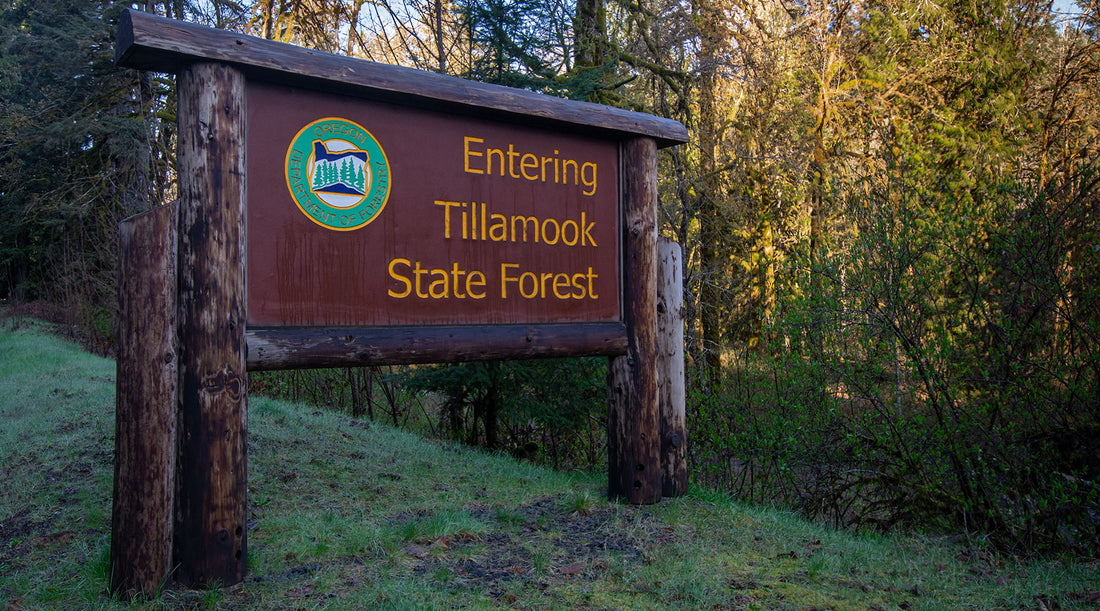To honor National Trails Day on June 1, 2024, and, in partnership with State Forests Trust of Oregon (SFTO), we've launched a series of new products that celebrates Oregon’s state forests. A portion of proceeds will help SFTO to connect people to the wonders of our state forests.
A key pillar since Beaver State Market opened in 2022 is to support organizations that demonstrate a commitment to enhance the quality of life for all Oregonians. The SFTO was founded to recognize that our state forests are living legacies to explore, find community, and to foster a common ground. It’s because of this broad commitment that we’re excited to support this organization’s work.
SFTO is committed to increasing opportunities for outdoor recreation and learning of all kinds, from anglers to OHV enthusiasts, hikers, mountain bikers, visitors to the Tillamook Forest Center and anyone seeking the simple joys of spending a day in the forest amongst nature’s wonders. Research has shown that time spent in nature offers numerous health and emotional benefits, including increased physical activity, stress and blood pressure reduction, and mental well-being.
This understanding isn’t new. A Japanese term, shinrin-yoku, emerged in the 1980’s to define a healing practice that involves immersing oneself in a forest to improve mental and physical health. Forest bathing, as the practice is known in English, involves being calm and quiet in the trees while breathing deeply.
The notion that spending time in nature is good for us goes back even further. Hippocrates, the Greek physician and father of modern medicine, often prescribed garden stays and walks in the forest to his patients, believing it put them in the best possible condition for healing, noting that, “Nature itself is the best physician.” According to legend, Hippocrates also taught his medical students in the shade of a Sycamore.
Today, Oregon’s state forests – Clatsop, Tillamook, Gilchrist, Sun Pass and scattered tracts managed in West Oregon and Western Lane County - cover approximately 745,000 acres, providing numerous benefits outside the individual level. Our forests contribute to the state, providing jobs and revenue from timber sales that fund local districts, counties and schools. Our state forests are more than trees, however. They are our heart, soul, and heritage, offering recreation, education, wildlife habitat and clean water.

Map courtesy of Oregon Department of Forestry
It’s impossible to think about forests and not first think of trees. With this in mind, we set out to identify three tree species that we wanted to feature in our product graphics which, appropriately, were designed in Forest Grove.
Douglas-fir was the first obvious choice. It’s not only the official state tree, but it’s the most common tree in Oregon, growing at elevations from sea level to 5,000 feet.

We also selected Ponderosa pine, the second most common tree in Oregon, which is dominant in the eastern part of the state. They are easily identifiable by long needles that grow in bundles of three. The wood from a ponderosa pine is quite versatile and can be used from construction to millwork.

Commonly known as the Garry oak, the Oregon white oak was the third tree we selected. This tree is commonly found in the Willamette Valley, with some individual specimens known to grow for around 500 years.

As SFTO works to nurture the community of visitors, volunteers, recreators and donors who value our state forests, one simple way any Oregonian can help is by donating to their mission, either directly or through the purchase of any item in our State Forests Trust of Oregon Collection. With the purchase of any of these items, 10% of the purchase price will be donated to SFTO to help finance their mission.
Explore the collection and gear up for your next visit to an Oregon state forest soon! To learn more about State Forests Trust of Oregon, be sure to visit their website.

